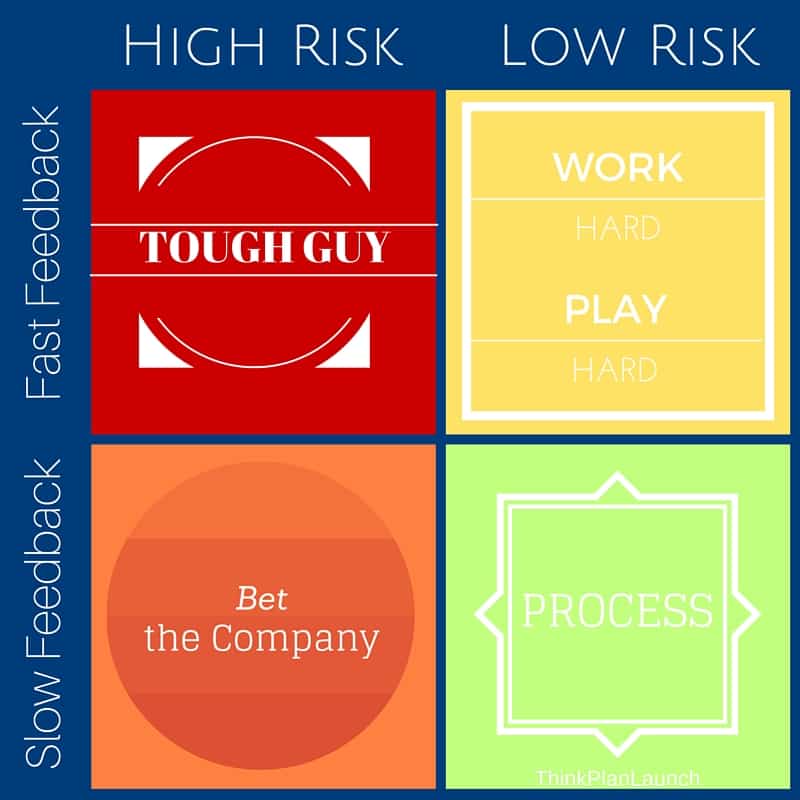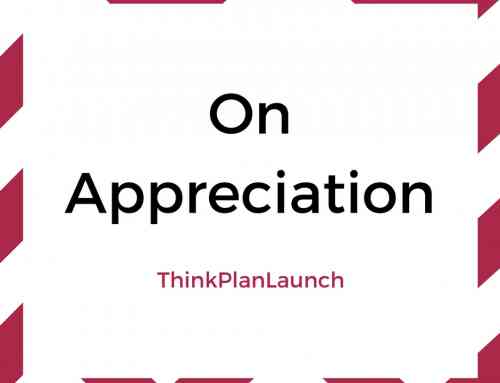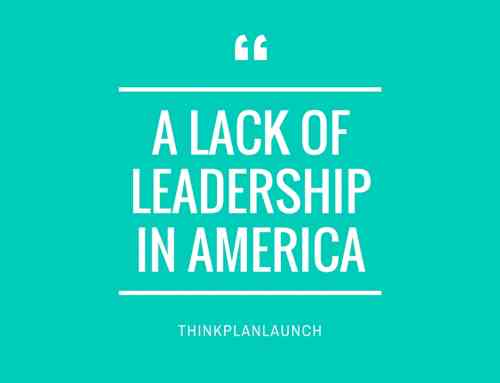Table of Contents
Company Culture Can Have the Biggest Impact on Your Long-Term Business Goals
When a company grows, the company culture needs to evolve with it. Whether it’s adding new customers, revenue, employees, executives, or products to your company, the company culture will be important for sustaining growth and high performance. Many executives will often neglect building a strong company culture. They will see the most important qualities of the company in terms of numbers and figures to put into a chart. The truth is, businesses that have the highest longevity and potential are those that adopt a company culture that promote the vision and core values of the company.
Company culture even goes beyond vision and values. It includes beliefs, assumptions, and habits. It develops a set of symbols, insider phrases, and language. Strong company culture establishes a unified cause and often includes heroes to worship and villains to despise (usually the competition). Simon Sinek really makes a good case.
Nearly every successful organization has perfected their culture. They always reevaluate it on a regular basis. They fine-tune it and align it with their goals. This can even be seen in many non-business organizations. Schools, non-profits, NGOs, and military forces always have culture on their minds. Even online communities (reddit, imgur, etc…) have an established culture!
Recently, a lot of tech companies are seen to be leading the way in establishing good company culture. They just happen to be in the spotlight of media and their company culture is often misrepresented. Tacking on weekly massages, unlimited vacation, nap time, and ping pong tables does little to strengthen a company’s culture that is fundamentally out of whack. There are many successful non-tech businesses that establish great company culture without the need of these perks.
What’s in it for the employee and the company?
The following benefits will be gained from great company culture
For the employee:
- Acceptance
- Integration
- Stress-reduction
- Empowerment
- Achievement
- Enlightenment
For the company:
- Employee feedback
- High productivity
- High performance
- Efficiency
- Good morale
- Competitiveness
Types of Company Culture
According to Deal and Kennedy, there are four types of company culture.
There are two factors that Deal and Kennedy used to categorize the four types. Degree of risk and speed of feedback. The degree of risk is measured in the tasks of employees and executives. Are they risking their lives, career, or reputation with their daily jobs? Are they constantly under scrutiny and need to make bold moves to secure their future? Speed of feedback is the time it takes for an employee or executive to learn about the results of their performance and whether it was a success or failure. With some companies such as a fishing company, it doesn’t take too long to figure out whether the fishing areas they selected paid off or not. With larger companies such as enterprises, the effects of decisions might take years to see and measure.
High risk, fast feedback: Tough-guy
High risk, slow feedback: Bet-the-company
Low risk, fast feedback: Word-hard, play-hard
Low risk, slow feedback: Process
Choosing a type of company culture
Certainly you can imagine your own type of company culture based on what you think is ideal. Matching your company to one of the four listed above might be easier, though. It can help bring clarity and structure to your strategy. Choose one and plan accordingly. There is no best culture type and each one has its strengths and weaknesses.
Which one might suit your business? It might be obvious which type of culture you should adopt based on the descriptions above, but perhaps not. We need to dive into the details of each type. Before we get into the details, it might be a good idea to review the DISC types of yourself and your team which will help identify behaviors that are prevalent which can determine a fit for company culture.
Work-hard, play hard
This kind of culture emphasizes hard work, long hours, and somewhat stressful environments. They reward their employees with the opposite. Great perks, relaxation, and flexibility with time. This kind of culture is suitable for teamwork where everyone from the bottom to the top of the company is expected to put in their time and make things happen.
Tech companies often fall into this category. They create a culture of hard work that is rewarded with free trips, expensive company retreats, beer and pizza at the office, and everything else you could dream up. Restaurants also fall into this category. A lot of the managing staff and owners face a long day of work and often celebrate at night by spoiling themselves with food and drinks. Sales is another good example where you have to put in the effort to reap the rewards. High competition and huge workloads force these companies to adopt this type of work culture as everything tends to be at a fast pace and always changing. Often everyone within the organization no matter what the position faces these requirements and teamwork is key. Successful companies will leverage this culture to increase their performance and competitiveness.
Since many of these companies measure success at the team level, it is important to consider individual performance where it is easy for low performers to slip through the cracks.
Tough-guy, machoism
Some companies (and organizations as you will see) adopt a tough-guy culture. Police forces, military, and sports organizations need to bolster their employees when they face high stakes, high risk tasks. Certain companies often have employees risk their lives, safety, reputation, or career. Adventure companies, fishing boats, and more create a culture of bravery and bravado to help their workforce push ahead and accomplish tasks most wouldn’t dare to try. Individualism is often prized and acts of machoism set people apart as well as inspire others.
With individualism as a big factor in performance, there still needs to be a balance between individualism and teamwork. Companies sometime need teamwork to some degree for special projects.
Process
From an entrepreneur’s standpoint, a process based company is the least desirable. Out of all the organizations that exist, probably the greatest example of all is governmental driver’s license organizations such as the DMV, DVLA, or whatever you call your office that licenses you to drive. Many forms, strict rules and procedures, long processing times, and an emphasis more on technical aspects over creative aspects make this type of culture good for insurance, banks, and government where there are large volumes of singular tasks rather than any concerted effort towards big projects or anything that requires artistic output. Employees often will not see any immediate effects of their performance or contributions to the organization and find excellence is often defined by their ability to follow all the rules and procedures.
Processes-based companies make taking any sort or action outside of the rule book hard. Since creativity is often not a factor for performance or success, it helps to allow for some flexibility and optimization within the process chains.
Bet-the-company
This kind of culture thrives for businesses that take big risks with their decision-making. For some companies such as large enterprises, oil, aircraft manufactures, and others, they need to make important decisions every day that have big consequences years later. The pressure and risk is high and the results from these decisions will not be observable for quite some time. This kind of company culture often requires a charismatic leader who can rally up the employees towards a big vision. These kinds of companies are typically very rigid and even small changes to the operation takes planning and time, unlike tech startups which implement changes easily. The bet-the-company approach allows these companies to make big changes.
The main weaknesses of a bet-the-company company is its slowness to react to major issues. It needs to be constantly addressed and action plans need to be made to mitigate any potential disasters. Also, any opportunities for gains to be made on a short term level need to be considered.
Your company culture foundation
With the type of company culture identified, the next step is to look into your foundation. It is necessary to align your type of company culture with the following items.
Vision and values
The vision of your company will be the guiding light for your business’s future. It is important to get this right from the very beginning. No matter what changes are made, the vision will keep your company on a straight path. Along with the vision are the values that your company will adopt. The both of these must be preached to every new employee, reminded to all existing employees, and used as a benchmark for your current executives. Reinforcement of the vision and values must be made.
If your company culture happens to be a work-hard, play-hard type, you will want to factor in teamwork as one of your values. For tough-guy types, honoring the individual as well as bravery. You can quickly align your values to play into your culture type and give it a strong backbone.
Beliefs and Habits
What does your company believe? What are the habits your company needs to adopt to improve its chances of success? The values of your company will shape the beliefs and habits. If high quality products are a value, then the company should believe that quality trumps efficiency and cost-savings. It therefore creates habits of exploring ways to improve on quality. The beliefs and habits should be codified as rules and policies in your company. They dictate what should happen and should make sense for everyone. Selling they vision and values to your company first will make the following rules and policies sensible.
Heroes
Heroes are very important as they become role models, examples of good behavior, and figures of inspiration and motivation. These people can be within your company or outside of it as long as they are aligned with your company’s values.
Rituals, Rites, Ceremonies, and Traditions
Simple activities can go a long way within a company. They become routine events that help reinforce your company culture. They also serve as means of onboarding new employees. Casual dress Fridays has fallen away to Beer and Pizza Fridays.
History and Stories
The history of your company should be described in more detail than facts and figures. It must have your company culture written all over it. How did your company get to the point where it is today? How have the values shaped the growth of the company? How will the history help determine the future?
Stories of employees or executives also help out demonstrate how core values where embodied in actions of heroics. The power of a good story will often have more impact than any rule or policy book. If you don’t already have any noteworthy stories, always look for opportunities to make new ones. You have to get this perfected to make your company culture strong.
Symbols and Language
Mascots, tools, trophies, and other objects often act as symbols that are part of a company’s culture. They become visual representation of heroes, stories, rituals and more and become daily reminders. Language also plays a big part as acronyms, nicknames, and insider talk become a big part of introducing new employees to their environment. It is important to take advantage of any opportunities to integrate symbols or languages into the culture.
What to do now
Hopefully you have identified a company culture that fits your organization’s goals and processes and more importantly the people that work there. The next big step is incorporating your company culture into the job hiring process. Many established methods such as job benchmarking allow for company culture to be embedded into job descriptions, requirements, and interviews so that a standard can be preserved.
While the workforce grows, executives should monitor and assess the outcome of company culture changes on a quarterly basis and make modifications where needed. With careful planning, company culture can help the the workforce align to the vision of the company which will result in increased productivity and lower turnover.





Leave A Comment